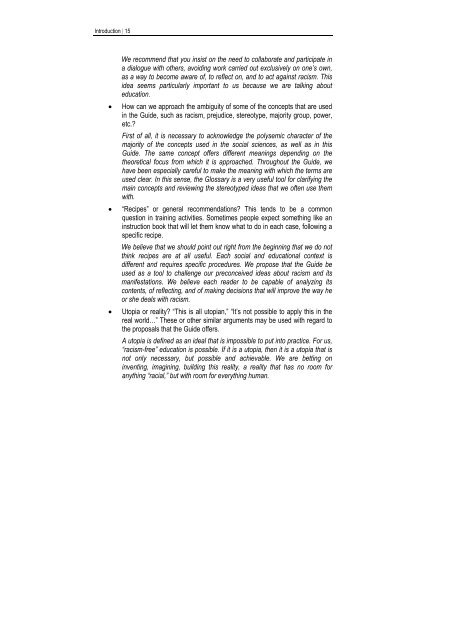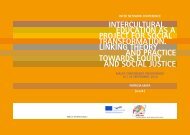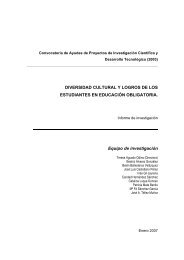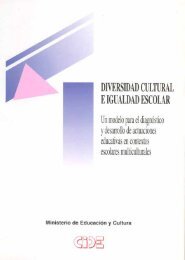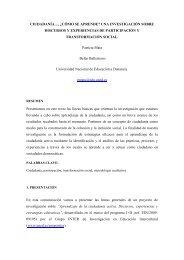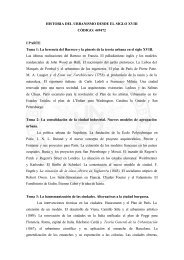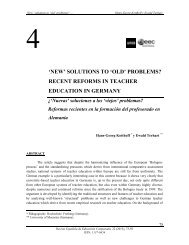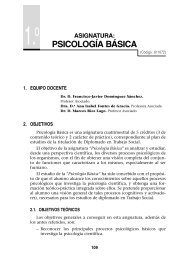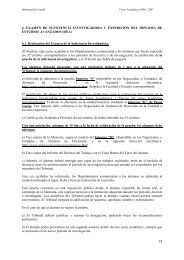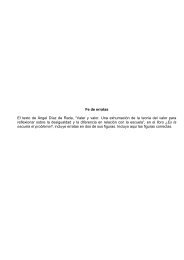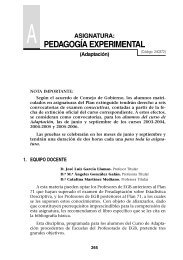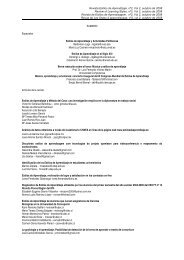Racism: What It Is and How to Deal with It - Uned
Racism: What It Is and How to Deal with It - Uned
Racism: What It Is and How to Deal with It - Uned
Create successful ePaper yourself
Turn your PDF publications into a flip-book with our unique Google optimized e-Paper software.
Introduction | 15<br />
We recommend that you insist on the need <strong>to</strong> collaborate <strong>and</strong> participate in<br />
a dialogue <strong>with</strong> others, avoiding work carried out exclusively on one’s own,<br />
as a way <strong>to</strong> become aware of, <strong>to</strong> reflect on, <strong>and</strong> <strong>to</strong> act against racism. This<br />
idea seems particularly important <strong>to</strong> us because we are talking about<br />
education.<br />
• <strong>How</strong> can we approach the ambiguity of some of the concepts that are used<br />
in the Guide, such as racism, prejudice, stereotype, majority group, power,<br />
etc.?<br />
First of all, it is necessary <strong>to</strong> acknowledge the polysemic character of the<br />
majority of the concepts used in the social sciences, as well as in this<br />
Guide. The same concept offers different meanings depending on the<br />
theoretical focus from which it is approached. Throughout the Guide, we<br />
have been especially careful <strong>to</strong> make the meaning <strong>with</strong> which the terms are<br />
used clear. In this sense, the Glossary is a very useful <strong>to</strong>ol for clarifying the<br />
main concepts <strong>and</strong> reviewing the stereotyped ideas that we often use them<br />
<strong>with</strong>.<br />
• “Recipes” or general recommendations? This tends <strong>to</strong> be a common<br />
question in training activities. Sometimes people expect something like an<br />
instruction book that will let them know what <strong>to</strong> do in each case, following a<br />
specific recipe.<br />
We believe that we should point out right from the beginning that we do not<br />
think recipes are at all useful. Each social <strong>and</strong> educational context is<br />
different <strong>and</strong> requires specific procedures. We propose that the Guide be<br />
used as a <strong>to</strong>ol <strong>to</strong> challenge our preconceived ideas about racism <strong>and</strong> its<br />
manifestations. We believe each reader <strong>to</strong> be capable of analyzing its<br />
contents, of reflecting, <strong>and</strong> of making decisions that will improve the way he<br />
or she deals <strong>with</strong> racism.<br />
• U<strong>to</strong>pia or reality? “This is all u<strong>to</strong>pian,” “<strong>It</strong>’s not possible <strong>to</strong> apply this in the<br />
real world…” These or other similar arguments may be used <strong>with</strong> regard <strong>to</strong><br />
the proposals that the Guide offers.<br />
A u<strong>to</strong>pia is defined as an ideal that is impossible <strong>to</strong> put in<strong>to</strong> practice. For us,<br />
“racism-free” education is possible. If it is a u<strong>to</strong>pia, then it is a u<strong>to</strong>pia that is<br />
not only necessary, but possible <strong>and</strong> achievable. We are betting on<br />
inventing, imagining, building this reality, a reality that has no room for<br />
anything “racial,” but <strong>with</strong> room for everything human.


